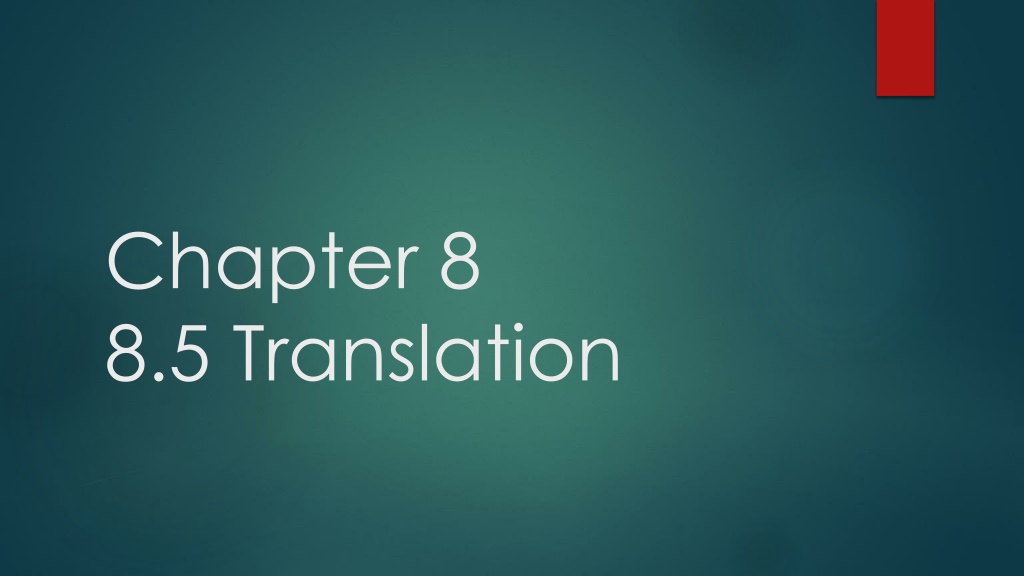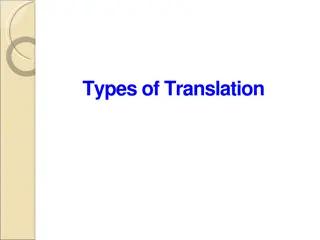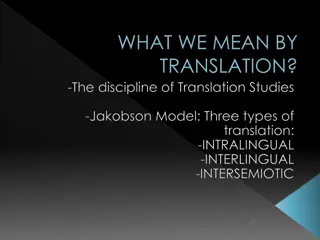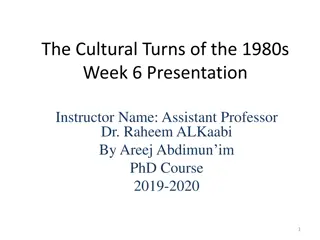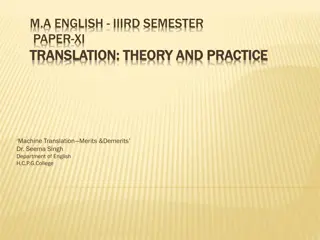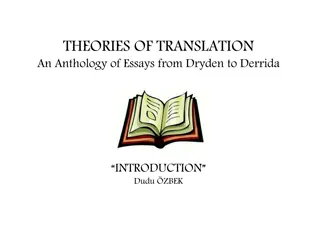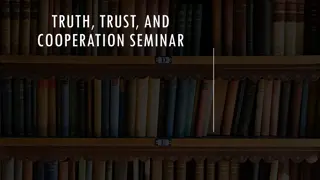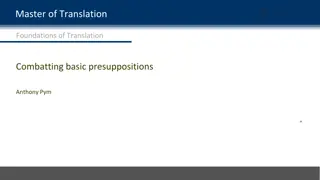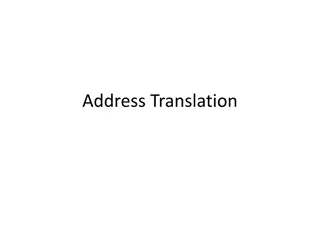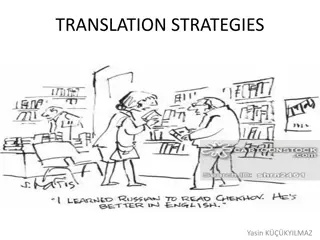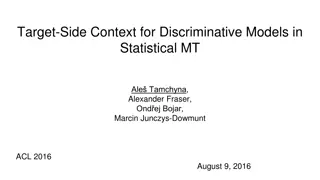Understanding Translation in Genetic Processes
Translation is the process of converting RNA messages into amino acids in cells. This key step in gene expression involves decoding codons, utilizing tRNA as adaptors, and following the genetic code to produce proteins. The shared genetic code, the role of tRNA in carrying amino acids, and the continuous process of translation until a stop codon is reached are all fundamental concepts in understanding how genetic information is translated into functional proteins.
Download Presentation

Please find below an Image/Link to download the presentation.
The content on the website is provided AS IS for your information and personal use only. It may not be sold, licensed, or shared on other websites without obtaining consent from the author. Download presentation by click this link. If you encounter any issues during the download, it is possible that the publisher has removed the file from their server.
E N D
Presentation Transcript
Chapter 8 8.5 Translation
Review: Recall that at the end of transcription, RNA (mRNA, rRNA, and tRNA) are produced, they detach from the DNA, and enter into the cytoplasm
Translation Translation is converting words from one language to another. Translation occurs in cells (in the cytoplasm) cells translate RNA messages into amino acids (the building blocks that make protein) *recall central dogma!
The words Recall that the words in DNA language are called Codons Codons: a sequence of 3 nucleotides that codes for an amino acid. Examples: AUG CUU CGA Different codons code for different amino acids (see table)
Genetic Code (table) On page 244 in textbook use table to determine what amino acid each codon codes for. Practice: AAU GAU AUU AUG (methionine) is a start codon signals the start of translation UAA and UAG are stop codons they signal the end of an amino acid chain. A reading frame is the process of reading every codon continuously without overlapping. (much like in English reading left to right or it doesn t make sense) Punctuation like the Start/Stop codons are very important.
Every organism shares the exact same genetic code!
tRNA. tRNA acts a an adaptor between mRNA and amino acids. They carry free-floating amino acids from the cytoplasm to the ribosome. They have an L shape One end carries an amino acid, the other end is an anticodon that is complementary to the mRNA codons, so it fits together with mRNA.
Translation This process continues to translate the mRNA strand until it reaches a STOP CODON! It then releases the new protein and disassembles The exiting tRNA goes back to the cytoplasm to recharge
See for yourself Transcription and Translation video
